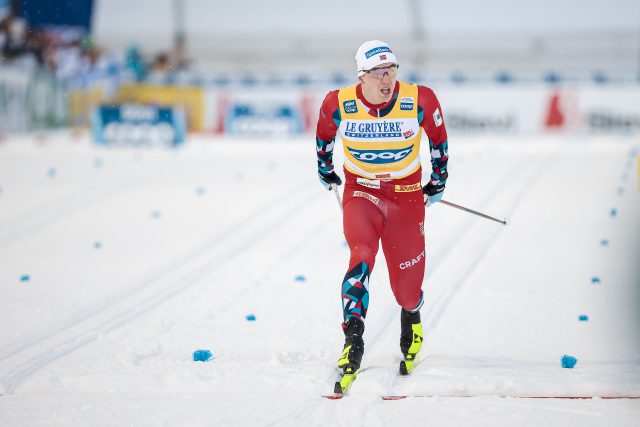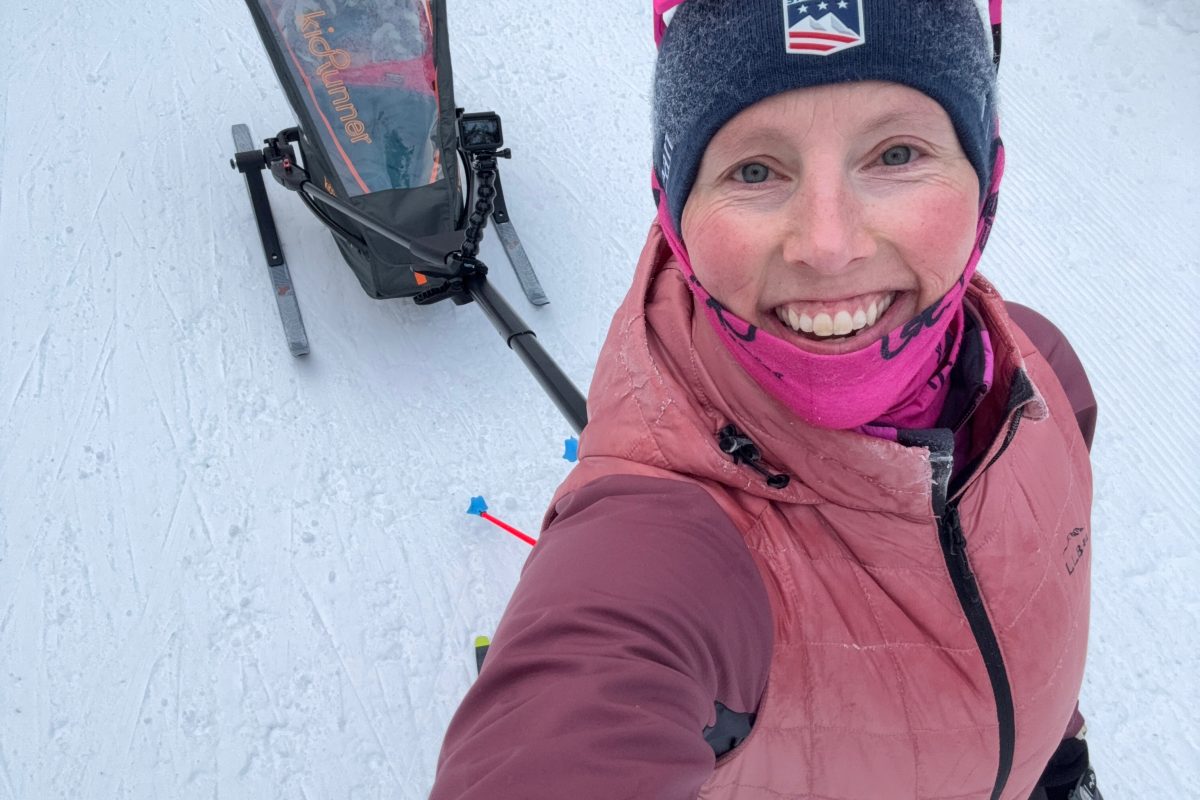 This coverage is made possible through the generous support of Marty and Kathy Hall and A Hall Mark of Excellence Award. Learn more about A Hall Mark of Excellence Award—or about supporting FasterSkier coverage—by contacting info@fasterskier.com.
This coverage is made possible through the generous support of Marty and Kathy Hall and A Hall Mark of Excellence Award. Learn more about A Hall Mark of Excellence Award—or about supporting FasterSkier coverage—by contacting info@fasterskier.com.

Day Two of the 2023-2024 FIS World Cup season showcased the individual start 10 k Classic race in Ruka, Finland. The Finn’s were chomping at the bit for an opportunity to break the Norwegian men’s stranglehold on distance racing: last year a Norwegian won every men’s distance event, a trend the Finn’s desperately wished to end on their home turf. A classic race on home ground seemed like the perfect opportunity to break Norway’s winning streak; however—in a result that brought heartbreak to the Finnish crowd—Norway was able to cling to its distance supremacy as Martin Loewstroem Nyenget (NOR) defeated hometown favorite and classic technique master, Iivo Niskanen (FIN), by 2.9 seconds. Norway rounded out the podium with Erik Valnes finishing third.
For the USA, Gus Schumacher was the top finisher placing 22nd. He was followed by Ben Ogden 39th, Scott Patterson 53rd, Luke Jager 56th, Zanden McMullen 58th, John Steel Hagenbuch 66th, and Zak Ketterson 71st.
For Canada, Antoine Cyr was the top finisher coming in 27th. He was followed by Xavier McKeever 35th, Olivier Leveille 40th, and Leo Grandbois 65th.

The Finnish crowd cheered on their native son, erupting every time Niskanen charged up a hill. In a stirring moment, the crowd chanted “Iivo-Iivo” as he dashed across the finish line. U.S. team coach Matt Whitcomb was able to hear the cheering and commented to FasterSkier that “it’s deafening, the Finns are so proud of him, and all of their racers, they explode when a Finn comes by.” And, for a while, it looked like it was going to be a storybook ending as Niskanen—having a fairly low start number—occupied the leader’s chair for a long time. He held a comfortable lead over all later finishers, though the hometown crowd began to appear nervous after Nyenget surpassed Niskanen’s split time at the five kilometer mark by three tenths of a second. At the 6.1 kilometer mark, Nyenget expanded his lead to 2.4 seconds. After that, it was nip and tuck between Niskanen and Nyenget as the Norwegian skier was only one second ahead at the 8.1 kilometer mark. The hometown crowd still held out hope for their man as Nyenget approached the finish. But, as he came into the stadium, Nyenget was met with stunned silence from the Finnish crowd that saw Finnish victory slipping away. That silence was music to Nyenget’s ears as he gave a final lunge and was able to nip Niskanen by 2.9 seconds.
In a rare display of emotion, Niskanen, watching at the finish line slammed his poles into the snow in disgust as he saw Nyenget displace him from the leader’s chair. Niskanen then quickly stomped off from the stadium area and headed out of view. Nyenget walked away with his second World Cup victory and sixth podium finish. He commented on hearing “Iivo…Iivo” throughout the race, and admitted after the race that he was “inspired to have beaten Iivo.”

The Ruka course tested not only racers stamina but their ski handling abilities as well: a speed of 45 mph (72.7 kph) was obtained by race winner Nyenget on a downhill. Whitcomb remarked to FasterSkier that while the speeds are high, it’s not a high risk situation. “Today wasn’t the fastest day for conditions,” Whitcomb said. “We’ve had speeds over 50 MPH on this downhill. It’s reasonably straight…it can be easily navigated in an interval race.”
Team USA was pleased with Schumacher cracking the top 25. “It’s great to see Gus coming back into the form that we know he’s capable of,” Whitcomb commented. “Gus has made some big changes to his training plan over the last year.” Whitcomb observed that, “one of the biggest changes was figuring out ways to absorb volume better. He’s cut back a little on his overall volume, and we’re seeing him absorb training better.” Whitcomb also praised Schumacher for the way he paced the race, steadily moving up in the standings as the race progressed.

“I felt a little weird today,” Schumacher commented after the race. “The first race is hard in the sense that your body isn’t used to staying at the limit, but I was happy with my pacing and finding my limit at the end of the race. The skis were really good and helped the technique stay together, which is really important in this course. Looking at the results, this is my best individual Ruka start, so that’s good to see and super motivating. As for looking forward, I feel like my classic and striding technique has improved, and I’m excited to work on that. Once racing starts to feel more natural, I’m excited to dig more into technique with my coach, Kristen Bourne.”
Today was also a chance for Norway’s Johannes Hoesflot Klaebo to establish firm footing in the distance crystal globe race, in which he finished second last year behind countryman, Paal Golberg. It would also be an opportunity for a shot at redemption of a sort for Klaebo after finishing third in yesterday’s sprint race. Speculation swirled that Klaebo was still feeling the effects of a positive COVID 19 test in early November. That speculation seemed to be confirmed when Klaebo’s struggles continued on the race course, and he was unable to turn things around from yesterday. He made a charge at the eight kilometer mark and moved into fourth. But he faded in the final kilometers and finished 14th. It’s a bit of a stretch to claim a skier is struggling when they finish in the top 20, but expectations are always so high for Klaebo that anything less than a podium is disappointing.

An ignominious form of history was also made in Ruka: for the first time, a skier was not permitted to start a race due to skis testing positive for fluoro compounds. Ukraine’s Mischenko Oleh was not permitted to start under FIS (International Ski Federation) rule ICR 351 which defines the penalties for bringing fluorinated skis to the start of a race. Oleh’s disqualification brings to light a potential problem with the new rule: teams with limited resources may not be able to perform the extensive remediation necessary to clean all the fluoro molecules from their skis and equipment. As U.S. Coach Matt Whitcomb outlined to FasterSkier yesterday, the amount of time and effort to clean fluoros is extensive. “I know the amount of time we have spent cleaning our infrastructure has been immense,” Whitcomb commented to FasterSkier after today’s race. “Not everybody has the time to do that, not everyone has the resources for that.” How lower-resourced teams will be able to comply with the new rules is yet to be determined. “There will be a learning curve,” said Whitcomb.

Men’s 10 k Classic Interval Start Results



